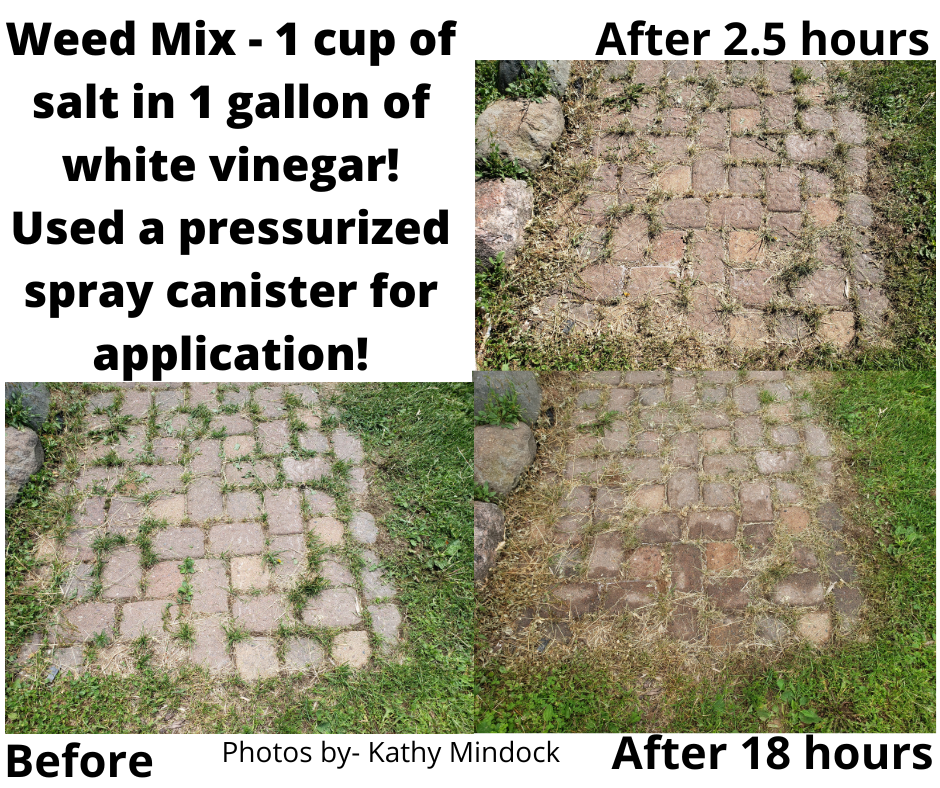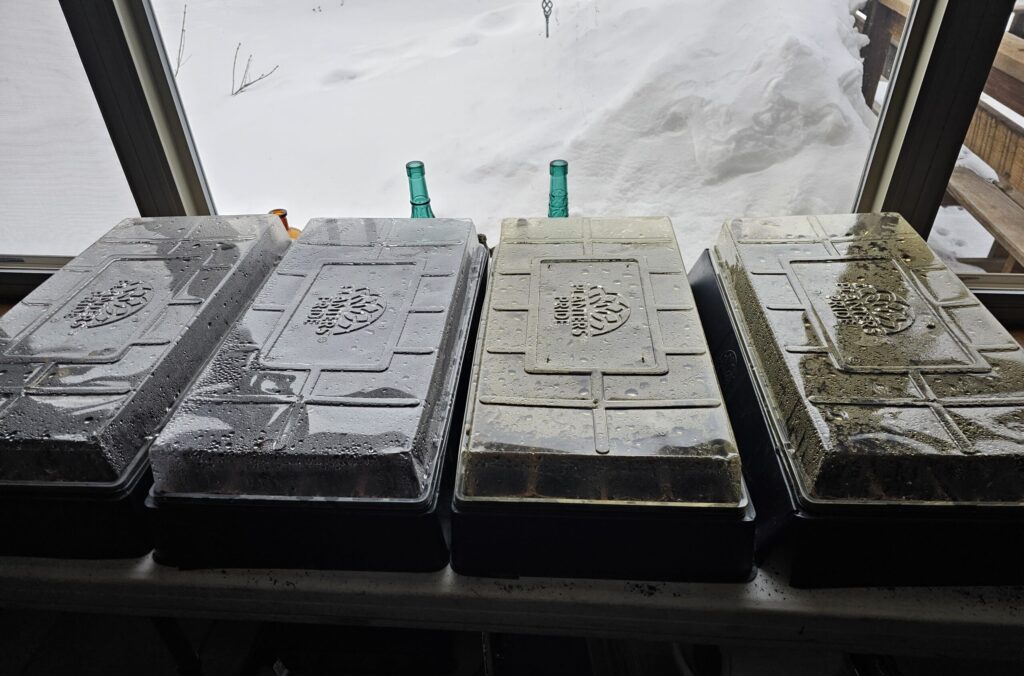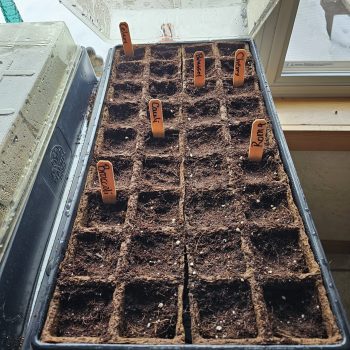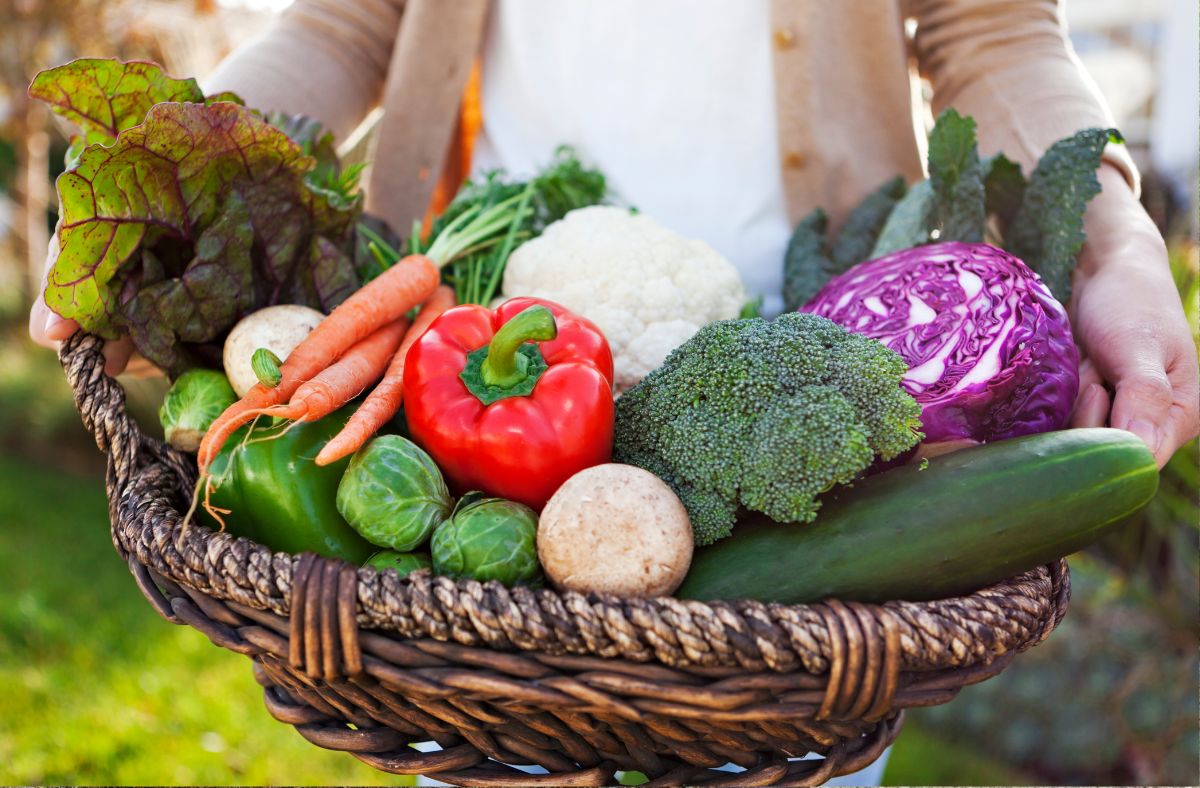Gardening Organically
Gardening organically starts using an approved fertilizer and organic seeds or plants. And not using chemical pesticides or weed killers. There are many more aspects, and unless you are growing with intent to sell to consumers, it will look slightly differently for all of us. If you want a little more details on Organic Farming and Agriculture here you go. There are also more links to other resources in that article as well.
My Favorite Natural Weed Killer

Finding a natural or organic weed killer that actually works is defiantly a challenge. And one that is cost effective. I love this recipe it fits the bill for all the above. Check out my before and after photos.
Mix together; 1 cup of Sea Salt in 1 gallon of White Vinegar, and shake to dissolve. Then grab a Pressurized Spray Canister and fill it with your solution. And head out to spray. Be cautious of over spray if near plants you do not want to kill. You will need to reapply throughout your growing season.
One tip is to apply when the weeds are thirsty after a dry day or so. Second tip is try to plan it at least a day before any rain is forecasted. This way you can ensure that the weeds take it all in and your solution doesn’t get wasted or diluted by the rain. Third tip is to keep your pets off the area when freshly sprayed. It’s not toxic, but as you know salt for one can be hard on the pads on their feet as well as full strength vinegar. Both can overly dry them out.
Manure or Fertilizer - Gardening Organically
Ideally the best fertilizers for gardening organically is manure from your own organically raised animals. Raw manure does need to be composted a year or more so it doesn’t burn your plants. But when it is ready it is amazing! If this is not an option, perhaps finding an organic farm nearby and checking to see if they sell their organic manure. For More information on raising your own animals check out my page Raising Pigs, Chickens & Ducks.
Composting organic kitchen scraps, leaves and other organic materials makes great fertilizer too. This process just take a bit more time to break down some of the scraps. For me I find it easiest to just dump the compost scraps in the corner of the garden or on things that I am not harvesting at the time. Such as the Rhubarb when I am no longer picking it or the Asparagus.
Consequently if none of those are an option. I’ve found some great online helpers. Or even just add them in addition to help with garden issues. If you have any root vegetable issues such as carrots not growing straight. I like to add a couple of things, the Bio-Live and Kelp Meal. A few other options that can be purchased online are Fish Meal, Neem Seed Meal, Organic Vegetable Garden Fertilizer and Organic All Purpose Fertilizer.
Seeds & Seedlings - Gardening Organically
If your local greenhouse has organic seedlings, and they are reasonably priced that’s the easiest option. However growing your own seedlings is very rewarding too. Some use grow lights, but I’ve found using a southern exposure window with a table set up at window height, works just fine.
You’ll definitely want some supplies. The Seed Starter Kit work great, just get a Heating Pad. I just use a Seedling Tray and add this type Organic Compostable Pots on a Seedling Heated Pad. For soil find yourself an Organic Seed Starter Soil Mix. Additionally I do add a cover once the seeds are planted and until they start to sprout them I remove the cover. If you leave the cover on too long the plants with get to tall and weak. Once they sprout you will need to rotate the tray.
The seedlings naturally will grow towards the light from the window, so you need to flip them each day so they start out facing away from the sun. In addition to turning them you need to fertilize them as soon as they have two leaves, use an Organic Fish Emulsion. It may smell bad but it works really well. Don’t use it if company is coming over. Continue doing these steps until about 2-3 weeks prior to planting. Then you need to harden them off by putting them in the sun more and more each day so they can get acclimated to the sun exposure.
Next, finding organic seeds, I prefer to order them online. My favorite website to order seed from is Grow Organic and then another site I use is Johnny Seeds they also carry seed starter supplies too. I really like their 18 Cell Organic Pots they are just a little bit bigger.


More Tips Prior to Planting Seedings;
Go to my post Hardening Off Seedlings
Weed Control - Gardening Organically
First option for weed control for gardening organically, is Mulch. Without a doubt mulch is one of the most common materials used for weed control. And there are several that are organic.
Second is Landscaping fabric, weed block fabrics or a 6 mm Black plastic are all commonly used for weed control. These options take less maintenance in-between, but will require more preparation when planting. Weed block fabrics can be controversial for some, this is where we need to do what is best for you and your family. In colder climates a black covering can help warm up the soil for better germination. Beside in hot climates a fabric weed block can help keep moisture in and save water. Just make sure when choosing you do not get one that contains a weed killer imbedded, that’s not a good option for your vegetable garden.
Lastly, another option is using a hoe or tilling the soil often in-between the rows with no mulch or weed block. This requires you to keep to a maintenance schedule or it will get out of hand quickly.
You still will absolutely need to pull weeds. I highly recommend doing that often. Don’t wait too long or they will take over and actually hinder the growth of your vegetable. The great news is that once your plants get big enough there is less weeding that needs to be done.
Planting Time
Since I use compostable pots for the seedlings, I plant the whole thing in the hole. I feel this does help with the planting shock. Another thing I like to do is if possible plant on a cloudy day or even sprinkling of rain, not pouring. Otherwise if it is sunny you will need to continue to water new plants so they do not get wilted.
Planting order can be important. For planning your planting I highly suggest using Carrots Love Tomatoes as a reference. Companion planting is a real thing. If using a weed block fabric you will need to make cuts for each plant so this takes longer. But if you use a heavy duty one you can use it more than one year and for some up to 3 or 4 years in a row.
For watering I like to use a Tripod Sprinkler to cover my whole garden. When you first plant seeds or plants you’ll need to water a bit more often if it’s not raining and also depending on the density of your soil. Heavy clay holds water longer than sandy soil so watering will vary for everyone.
As it grows you will love all the fresh produce, if you are wanting to do some canning or preserving check out my page Canning or Preserving.
Closing up the Garden
Obviously it’s time to remove the dead plants, I feed some to the pigs and save some. Then remove the weed block and put some of the plants back on the garden to get tilled under. We live where we get a lot of leaves in our yard in the fall. Once most of them have fallen, we like to sweep them up and dump them in the garden. Once we till it all in it decomposed quickly and a a great addition for fertilizer and soil composition for organically gardening. Then all winter I dump the fresh kitchen compost scraps on the garden to be tilled under in the spring. This seems to work out well and is an easier way to deal with composting kitchen scraps. My grandma used to do this and she always had a fantastic garden year after year.
*Highlighted text and tabs contain clickable links. Some on this website contain links in which commissions are earned. If you choose to use them, thank you for your support! This helps us continue to offer more content.
